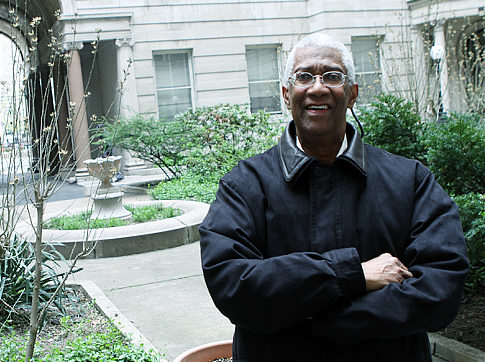Residents of Iconic Harlem Building Prize That ‘Got Away’ Remember

Decades later, just thinking about the great prize so nearly won still brings tears to Laconia Smedley‘s eyes.
“A lot of people don’t know that we saved the building,” Smedley said. “But we could have owned it. When you do work like that, it’s some accomplishment. Maybe nobody knows much about it, but you know.”
Leola Franks agreed.
“We would own Graham Court right now, if we had been a little stronger and had a different way of looking at things,” she said. “We would have been one of the first co-ops in Harlem. We would have been right on time.”
Graham Court was the prize; an eight-story, 800-room, 100-apartment building on Seventh Ave. at 116th St. Built at the turn of the century by William Waldorf Astor and designed by celebrated architects Charles Clinton and William Russell, whose many projects included the Langham Apartments at 73rd and Central Park West and the Apthorp Apartments on Broadway and 79th St.
With its large apartments – some with as many as 11 rooms – eight elevators and internal courtyard, Graham Court was a premier address when it opened in 1901, considered so exclusive that Jews could not rent there and blacks could not even find work on the 40-strong uniformed staff.
The building had retained much of its glory when Franks, now 76 years old, first saw it in 1944, when she came from Franklin, Va., to visit an aunt who lived there.
“Up until then there was still a lot of glamour to it,” Franks said. “All the marble and columns. It still has the same touch of glamour when I came back in 1948 to live here. It was a community unto itself, a gated community, with its own electrical plant.”
Smedley, 75, came to New York from Detroit in 1956 at the urging of Edward Boatner, a noted arranger of traditional Negro spirituals, to study music.
He remembers his first taxi ride from the train station to Boatner’s 135th St. home left him in culture shock. “I was a timid soul,” Smedley said. “It was too rough, too wild. It took several days before I came out of the house.”
Of course he got over it. “You find you get caught up in the energy and creativity of New York, the variety of people who are here,” said Smedley, who would make a career teaching voice and piano. “It really became an exciting place.”
Smedley came to Graham Court in 1960, renting a space in the seven-room apartment he now occupies and where he still teaches. Franks’ aunt died in 1969 and she took over the apartment.
The Sixties and Seventies were hard on Harlem and Graham Court. By 1980, around the time Smedley became tenant association president and Franks the group’s secretary, the landlord had walked away from the building, leaving residents without heat or hot water.
It would stay that way for two years.
“It was a very difficult time, because we had to go out in the street to get water,” Smedley said. “We used a fire hydrant at Seventh Ave. and 116th St.”
“I called that time our covered wagon days,” Franks said. “I live on the eighth floor and we had to go down to the street to get water to bathe and to make a cup of coffee. Sometimes it was so bitter cold you felt like your hands were going to fall off.”
The tenants weathered the various crises with grit and the help of local politicians like the late Fred Samuels and City Councilman Bill Perkins, who helped bring in several administrators to handle the property until an owner could be found, said Smedley.
Sometime around the mid-1980s, the city came up with an unusual proposition: they would sell the building to tenants – essentially creating one of the first cooperative apartments in Harlem – if 60% of tenants signed on to the deal.
Franks recalls the deal being even sweeter.
“The city told us that if we got this building off the ground it would change the whole neighborhood, because a lot of the buildings around us were somewhat destroyed or in disrepair because the ’60s riots left a lot of desolation in its path,” she said. “The idea was we could get other buildings to do what we did.”
Smedley, Franks and a cadre of tenant association members canvassed the building for support. They circulated flyers and held informational meetings to discuss how the conversion would take place and what it would mean to be owners rather than renters.
“There were concerns,” Franks recalled. “Some tenants fought it because they said the repairs would fall on them and many of them were of median income and didn’t think they could afford to make repairs.”
The tenants fell four votes short.
The building’s exterior was landmarked in 1984. Efforts to landmark the interior failed because several apartments had already been cut into smaller units, Smedley said.
“It was a generational thing, where older folks did not trust younger people,” said Smedley, who afterward bought a Harlem brownstone. “Four elderly people just would not sign. After the vote failed, I just sat in this chair and cried.”